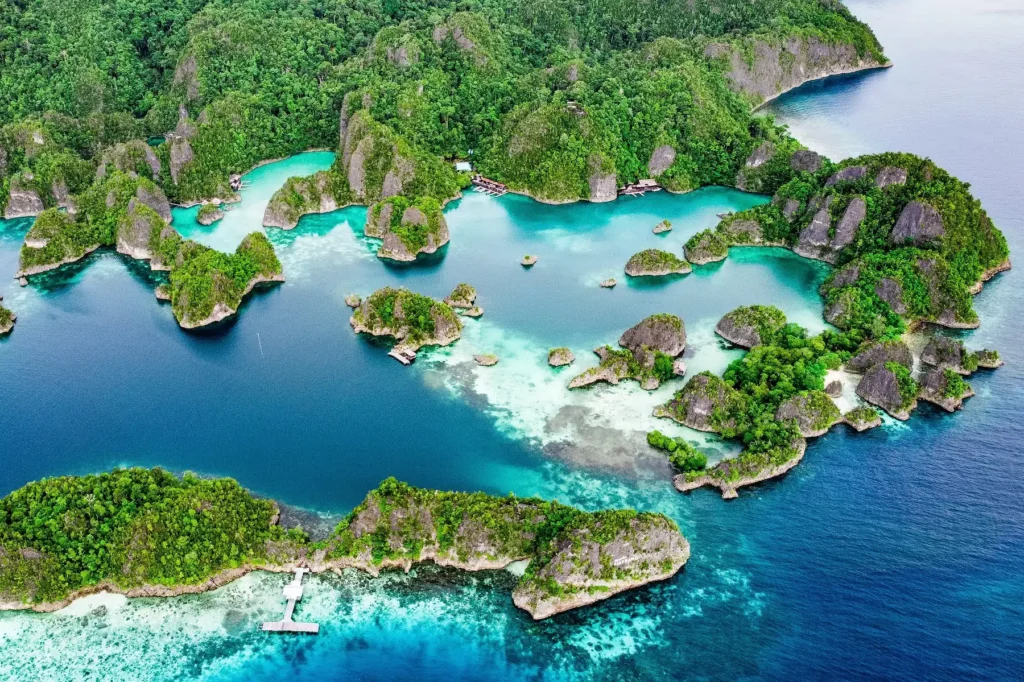Nestled in the heart of the Coral Triangle, Raja Ampat is a breathtaking archipelago that has become a sought-after destination for marine enthusiasts and adventurers alike. Comprising over 1,500 islands and cays, this Indonesian paradise is renowned for its pristine waters, rich biodiversity, and awe-inspiring underwater landscapes. Scuba diving in Raja Ampat presents an unparalleled experience, offering divers a mesmerizing journey into one of the world’s most diverse marine ecosystems.
A Dive into Biodiversity
When it comes to marine biodiversity, few places can rival Raja Ampat. Boasting over 600 species of hard corals and 1,500 species of fish, the waters of this archipelago are a vibrant mosaic of life. Scuba diving Raja Ampat provides a unique opportunity to encounter rare and endemic species, from the flamboyant wobbegong sharks to the elusive pygmy seahorses.
Dive Sites Galore
The variety of dive sites in Raja Ampat ensures that every dive is a unique experience. Whether you’re exploring the sunken Japanese WWII aircraft in shallow waters or drifting along the deep walls adorned with gorgonian fans and soft corals, there’s a dive site for every level of experience. Key sites such as Cape Kri, Manta Sandy, and the Blue Magic are just a few of the gems awaiting underwater explorers.
The Manta Magic
One of the highlights of scuba diving in Raja Ampat is the chance to swim alongside majestic manta rays. These gentle giants, with their expansive wingspans and graceful movements, often frequent the region’s cleaning stations, allowing divers to observe them up close. Encountering a manta ray in its natural habitat is an unforgettable experience, a dance of nature that leaves a lasting impression.
Sustainability and Conservation
Given its ecological importance, there’s a strong emphasis on conservation and sustainable tourism in Raja Ampat. Local initiatives and dive operators focus on preserving the region’s natural beauty, ensuring that scuba diving Raja Ampat remains an ethereal experience for future generations. Divers are encouraged to follow best practices, minimising their impact and promoting the health of the marine ecosystem.
Tips for Scuba Diving Raja Ampat
- Best Time to Dive: While Raja Ampat is a year-round diving destination, the optimal time is between October and April when seas are calmer and visibility is at its peak.
- Equipment: Given the remote nature of Raja Ampat, it’s advisable to have all essential diving equipment with you. Some resorts and dive operators offer rental services, but it’s always good to be prepared.
- Safety First: Always dive with a buddy and be aware of currents, which can be strong in certain areas.
Raja Ampat’s Cultural Immersion

Beyond its underwater marvels, Raja Ampat is also a rich tapestry of cultures and traditions. The indigenous communities of the archipelago have lived harmoniously with the sea for generations. For those taking a break from scuba diving, Raja Ampat offers insights into local customs, dances, and traditional boat-making techniques.
The Iconic Phinisi Boats
No mention of Raja Ampat is complete without acknowledging the Phinisi boats. These traditional wooden sailboats, crafted meticulously by the Bugis seafarers of Sulawesi, have become iconic in the region. Today, many of these boats have been converted into luxurious live-aboards, offering scuba diving enthusiasts a unique way to explore Raja Ampat, combining comfort with tradition.
Underwater Photography in Raja Ampat
For underwater photographers, Raja Ampat is a dream come true. The vivid colours, clear waters, and abundance of marine life offer countless opportunities to capture mesmerising shots. From macro subjects like nudibranchs and pygmy seahorses to larger marine dwellers like sharks and turtles, there’s no end to the subjects you can focus on. When scuba diving in Raja Ampat, it’s worth investing time in both wide-angle and macro photography to capture the essence of this marine paradise.
Environmental Initiatives and Community Engagement
Given the global significance of its biodiversity, several environmental initiatives are operational in Raja Ampat. Marine protected areas have been established, and there’s a strong push for community-led conservation programs. Dive operators often collaborate with local communities, ensuring that the benefits of tourism are shared and that the environmental impact is minimized. As a diver, supporting these initiatives and engaging with local communities can make your trip more meaningful and impactful.
Planning Your Trip
While the beauty of Raja Ampat is undeniable, it’s essential to plan your trip carefully. The region’s remoteness adds to its allure but also requires thorough preparation:
- Access: The primary gateway to Raja Ampat is through Sorong in West Papua. Regular flights connect Sorong to major Indonesian cities like Jakarta and Bali. From Sorong, boats and ferries can take you to the main islands of Raja Ampat.
- Accommodation: From luxury resorts to homestays, Raja Ampat offers a range of accommodation options. It’s advisable to book in advance, especially during peak seasons.
- Health Precautions: While Raja Ampat is relatively safe, it’s always good to take standard health precautions. Ensure you’re updated on routine vaccines, and consider taking malaria prophylaxis.
Final Thoughts
Scuba diving Raja Ampat is more than just an adventure; it’s a journey into a world where nature and culture intertwine seamlessly. As you navigate the depths of its waters and engage with its communities, you’re reminded of the planet’s wonders and the responsibility we bear to protect them. Whether you’re a seasoned diver or a novice, Raja Ampat promises an experience that will linger in your memories, beckoning you to return to its azure waters time and time again.
UP NEXT
Divers Free Whale Shark Tangled in Rope
Scuba Diving in Tonga: The Oceanic Nomad Guide



